The old and new days of the Paris Department Store in Budapest

Világjáró Magazin tells us the story of Sámuel Goldberger, who dared to dream big and opened the Paris Department Store at Andrássy street 39. However, he could not enjoy his creation for too long, as WWI broke out a couple of years later.
The Paris Department Store’s name is Párisi Nagy Áruház in Hungarian but was previously known as Divatcsarnok. It is a well-known shop on Andrássy street, but its story actually began at Rákóczi street, which was known back then as Kerepesi street. The famous textile mill owner, Sámuel Goldberger opened his first shop in 1898, which became the first shop in Budapest, where both the lower middle class and the better-waged workers could afford to buy pins, hats and even stationery.
Losses followed by great success
Goldberger sold his merchandise at a low price, the news of which spread like wildfire and in the next couple of years he had to open more and more shops in the apartment block. In the meantime, he clumsily ignored the safety regulations, and due to a blow-out, his famous Paris Department Store – which already employed 150 people at the time –
burnt down in August 1903.
Fourteen people died in the fire, among them the wife of Henrik Goldberger, who was one of the owners.
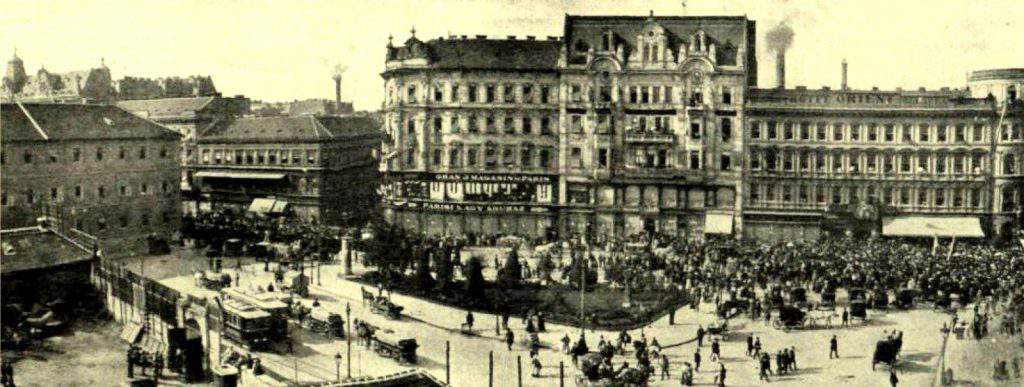
photo: egykor.hu
The entrepreneur recovered quickly from this huge moral and material loss and ventured even further. He’s been dreaming about opening a department store since he visited the shopping complexes in Vienna, Berlin and Paris in his youth. He found the perfect place for his new shop at Andrássy street 39. The Neo-Renaissance palace, built in 1885, was home to the Terézváros Casino until then. Sámuel and his brother took up the task of renovating the Casino in 1909. He acquired the money for the grandiose plans from selling the remainder of the shops. Zsigmond Sziklai was in charge of drawing up the design plans and Gusztáv Petschacher (the designer architect of the original Casino) with the execution of the plans.
The side of the building looking on Andrássy street was demolished and in its place, a ferroconcrete structure was built. This structure was still new back in those days.
Thus, the first Hungarian modern store was brought to life in 1911.
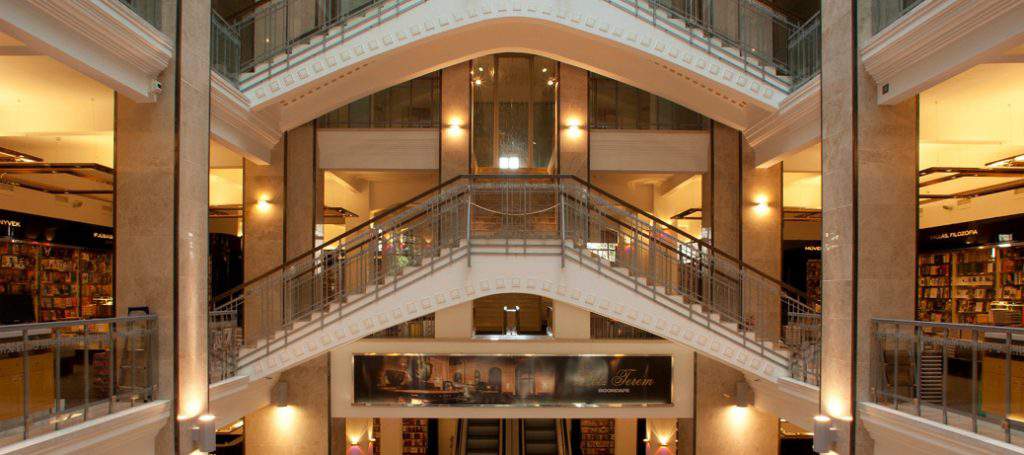
The building had a gallery, a single-area organisation, six stories and a roofed glass aula. The guests were amazed by the marble pillars, the gilded stairwell, the colourful glasses of the windows, and the glass walls and mirrors of the elevators. From the roof garden of the building, one could admire the view of Budapest, and in wintertime, the area was used as a skating rink. Still, the jewel of the store was the ballroom from the Casino days, the walls of which were lavishly decorated by painters Károly Lotz and Árpád Feszty.
This was a tremendous improvement in quality compared to the previous Paris Department Store. The inventory changed according to this, now aiming for upper-middle-class customers.
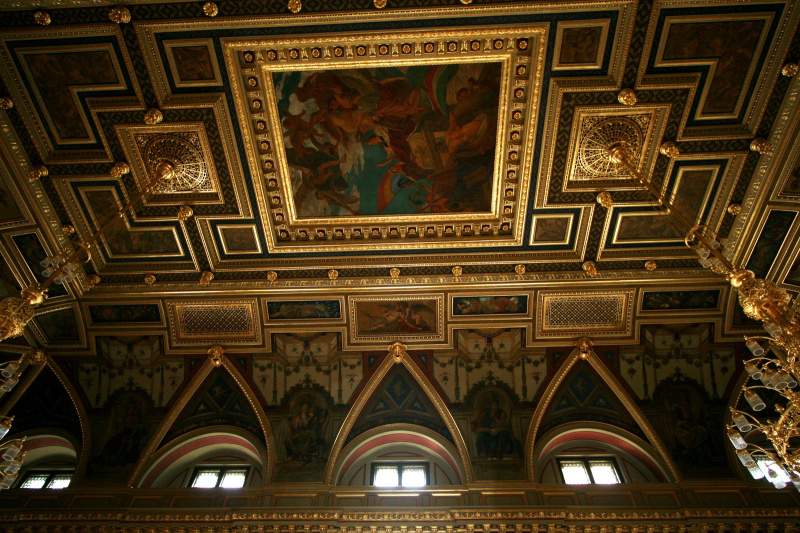
The ruins after the war
Goldberger’s dreams of a luxury store were quickly torn apart by the onset of the war. However, even before WWI broke out, solvent customers were becoming much harder to find, while
the economic crisis following the war was threatening with bankruptcy.
To prevent this from happening, the Goldberg brothers transformed the family business into a joint-stock company in 1924. The store was parcelled out for renters and it started to resemble a bazaar, where dirt-cheap items were sold. It was like Goldberger was shoved back in time, to the early days of his Kerepesi street shop.
The Paris Department Store became cheap and notorious in the inter-war years and could not escape nationalisation either. For a while, it was used as a book depository, then in 1956, it was reopened as a department store, now named Divatcsarnok (loosely translated as Fashion Hall). The building was declared a national monument in 1967 and operated as part of the Centrum chain until 1999.
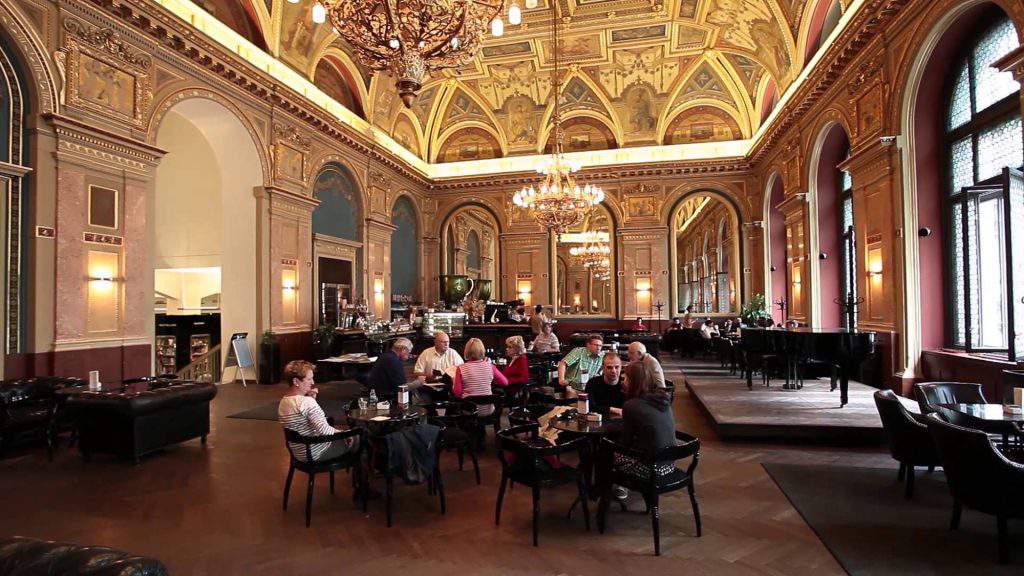
photo: YouTube / Alexandra Kiadó
The uncertainties in the new century
With the appearance of shopping malls, Divatcsarnok had to be closed down in 1999. Centrum Rt., the then-owner of the establishment, wanted desperately to sell the empty building, and after a long hunt for a buyer, agreed to sell it to the French Orco Property Group in 2001. However, the government suddenly made claims to the property and the national treasury bought the building. A lot of monumental and great plans were discussed, but
there was no money to reopen the building for public functions.
First, there were talks about opening an IT centre there, then of establishing the Budapest section of the world-wide famous contemporary Guggenheim Museum. Architects and conservationists would have rather had it as the home of a museum of architecture, while the city leadership and the representatives of contemporary music wanted it to have musical functions. Other plans involved the establishing of a House of Humour or a Central European cultural centre. The government grew worried because of the billion forints budget that could have been needed in case of any of these plans, so the building was put on sale.
Ironically, the building eventually landed in the hands of the Orco Group.
After detailed art history research, the French company got permission to renovate the Divatcsarnok in August 2007. Thanks to this, the atrium lit by sunlight and its gorgeous stairwell was restored to their original glory, and the Lotz room was reopened to guests. However, the function of the building changed, as only the ground level and the first floor were open to customers.
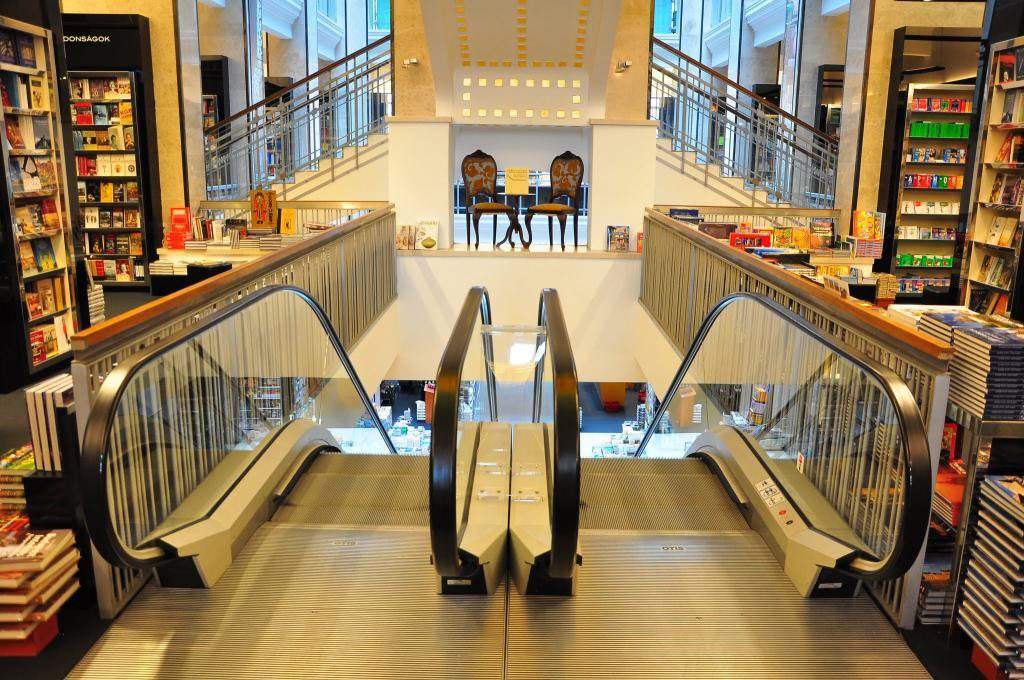
The beautifully renovated building operated by Orco Property Group was first rented to the Alexandra book house. The two-story Alexandra book house, which was of European standard, was decorated following a unique conception, with special furniture, and with cafés and wine shops that were unlike those in the shopping malls. The Lotz room was used for book launches, balls and cultural events. Sadly, the new golden age of the Paris Department Store only lasted until this March: the book house chain went bankrupt and the Lotz Café was closed down due to technical reasons.
As of now, the future of the building and the splendid ballroom is uncertain.
featured image: https://www.flickr.com/photos/nora-meszoly/
Ce: bm
Source: vjm.hu






As one looks back into the past of Budapest one can notice that this town was build, destroyed, rebuild and -again- destroyed and finally rebuild again. Hopefully for the very last time because the city is and the buildings are beautiful and clean again. It is a good feeling to be back in Budapest, the city that I visited since 1966 and I have seen a lot of changes from that period on.
Nobody can say that Hungarian people are only making profit from the EU-subsidies. Really nobody, that is to say if they have (some) brains and a (little) knowledge of the Hungarian history. The Hungarian people have learned their lessons well and they are proud of their country and so am I. I live in Holland but I prefer to stay in Budapest as many times as possible!
It is a great nation, they have great and brave leaders, they stand for their own people, something that cannot be said of Dutch ‘representatives’.